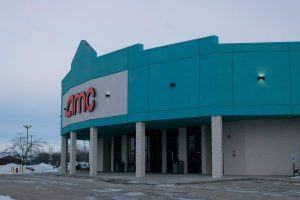Physics accelerates
November 7, 2002
About 30 of the world’s leading scientists of particle physics will visit NIU today to lay plans for the next significant step in particle physics.
They will meet today through Saturday for a workshop to begin the design of a particle accelerator.
An accelerator creates two beams of particles, such as protons, electrons or positrons. The particles then are accelerated to extremely high speeds and smashed together.
“There’s a lot of groundwork to be done, both for the accelerator and the detectors,” NIU physics professor Gerald Blazey said.
A section of the accelerator called a detector finds new particles that are produced from the collision of the two particle beams. Most particle accelerators are circular, but the group will discuss designs for a linear one.
The circular accelerators are used to discover new particles, Blazey said.
Once a new particle is discovered, a linear accelerator is used to study it. Scientists are trying to find an elusive particle called the Higgs particle. The Higgs particle, or “God particle,” essentially would explain how everything has mass. Once it is found, a linear accelerator would be used to study it, Blazey said.
Blazey is co-director of the Northern Illinois Center for Accelerator and Detector Development (NICADD), which is sponsoring the workshop this week. He also is the co-spokesperson of the FERMI National Accelerator laboratory located near Batavia.
“This is hopefully the first of a series of meetings,” said Dhiman Chakraborty, assistant professor of physics and member of NICADD.
The group hopes to meet once or twice every year after the initial meeting, he said. This week’s workshop will be the first step in designing and eventually building the particle accelerator.
“Until now, there have been ideas that people maybe talked about over coffee,” Chakraborty said.
The purpose of the workshop is to move from the realm of ideas toward an actual design. The group plans to create a simulation of how the accelerator would detect particles, Chakraborty said. The simulation will be done in very powerful clusters of computers using a program that has a detailed model of the interaction, he said.
“A decision will be made on the specific technology in two or three years,” Blazey said.
Blazey estimates a decision to build the accelerator will be reached in five years, as well as a decision on where to build it.
There are several competing ideas about how to build a part of the accelerator called the calorimeter, Chakraborty said. The calorimeter is a large cylinder. It is about six meters (20 feet) in length and two-and-a-half-meters in diameter, Chakraborty said. The calorimeter has two segments, or shells. The inner shell is called the electromagnetic shell and the outer shell is called the hadronic shell.
“NICADD is interested in a specific design of the hadronic section,” Chakraborty said.
In the design, NICADD hopes to use thousands of small, thumbnail-sized cells made mostly of plastic. The cells, called scintillator cells, will collect light to gather information. Two of the competing designs for the calorimeter will use cells that collect charge instead of light.
Manuel Martin, assistant director of NICADD, said that NICADD’s cells are made up of three parts. The first part is called the active material. It is a small hexagon, 20 millimeters wide, that collects light. The second part is a thin fiber attached to the active material. The fiber transmits light from the active material to the accelerator’s detector, where scientists can measure and interpret the light. The third part, called the absorber, is made of brass, Martin said.
Decisions on which design to use for the calorimeter could likely be made during the workshop this week.
John Shaffer, chair of the physics department, said the department is very happy to host the workshop.
“It really, in a way, is something that gives us visibility in the world outside,” Shaffer said.






